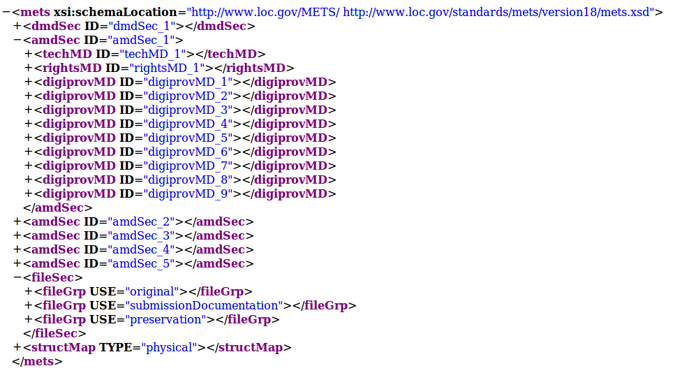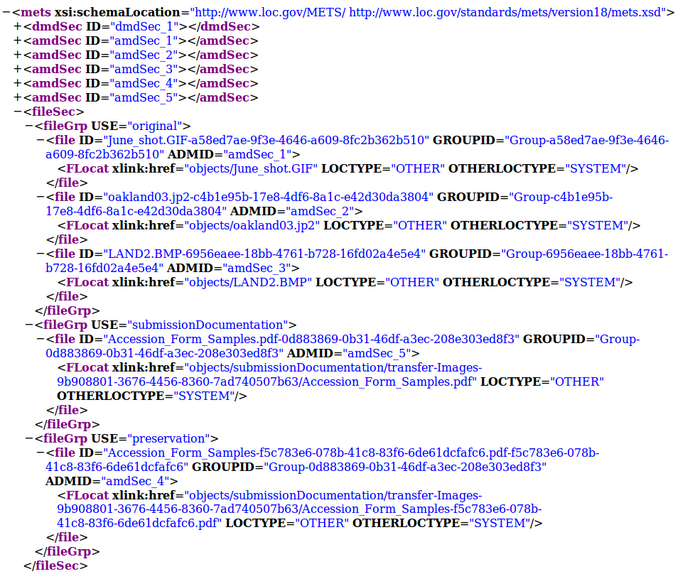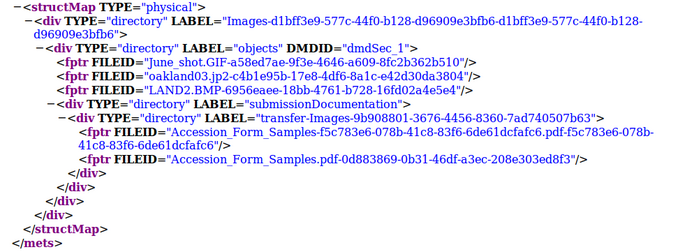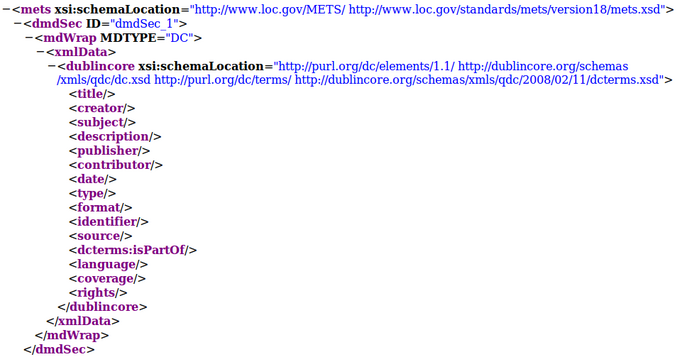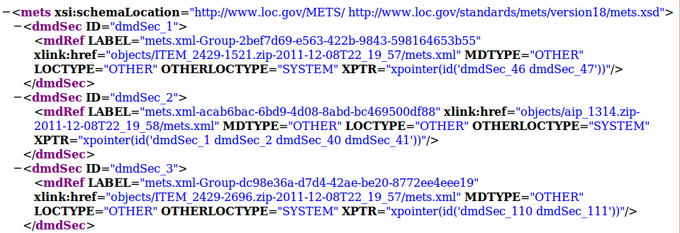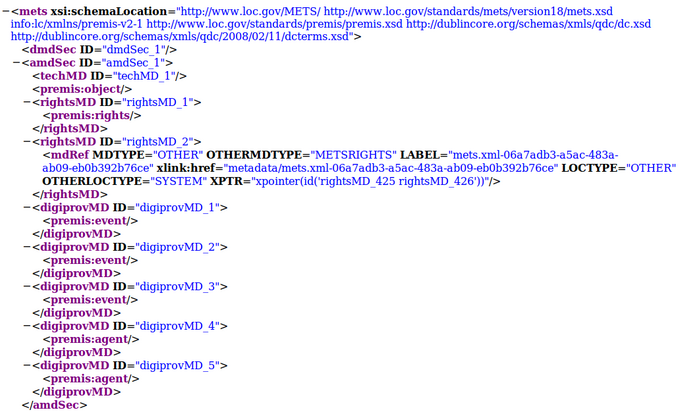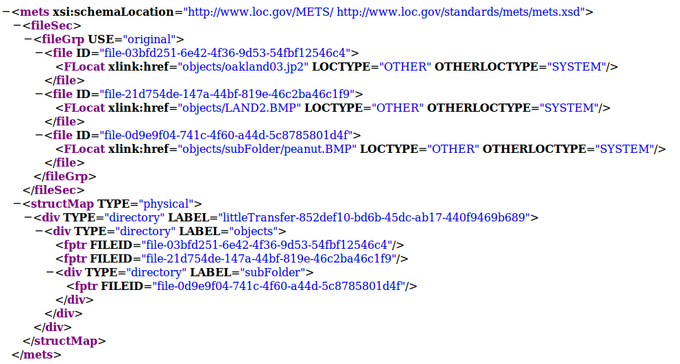METS
Main Page > Development > Development documentation > Metadata elements > METS
METS for Archivematica AIP[edit]
Basic outline[edit]
- The METS file will have a basic generic structure which will be present for all AIPs derived from different kinds of transfers. Archivematica currently uses METS version 1.11
- Sample METS from 1.0: Media:METS.752545fa-6869-41d4-95b1-710ac659525d.xml
<dmdSec>[edit]
- There may be one dmdSec for the AIP as a whole. Each original file may also have a dmdSec.
- The dmdSecs are numbered dmdSec_1, dmdSec_2 etc.
- The dmdSec contains Dublin Core metadata. If the user does not enter any DC metadata during transfer/ingest and no DC metadata was included in the transfer (eg as part of a DSpace export), there will be no dmdSec.
- The dmdSec may contain a reference to metadata in another file, such as a mets.xml file included in a DSpace export.
<amdSec>[edit]
- There is one amdSec for each object.
- The amdSecs are numbered amdSec_1, amdSec_2 etc.
- Each amdSec will include one techMD and multiple digiprovMDs
- An amdSec for an original object may also contain one or more rightsMDs. The rightsMD may contain a reference to metadata in another file, such as a mets.xml file included in a DSpace export.
<fileSec>[edit]
- There is one fileSec listing all files.
- The fileSec is organized into the following fileGrps:
- original
- preservation
- service
- access
- submissionDocumentation
- license
- text/ocr
- Original is required for all METS files.
- SubmissionDocumentation is included if the AIP includes submission documentation.
- Preservation is included if the AIP includes normalized files.
- Service and access may be used if the AIP contains those subfolders - i.e as the output of digitization workflows.
- License and text/ocr are used if the AIP was created from a DSpace export containing licenses and ocr text files.
<structMap>[edit]
- As of Archivematica 1.7 there are two structMaps. The first is labeled "Archivematica Default" and shows the physical layout of the files in the objects directory.
The second is labeled "Normative Directory Structure" which shows the logical structure of the files in the objects directory. This second structMap is needed to document empty directories before they are deleted at 'store AIP' in the Storage Service. At AIP re-ingest the new logical structMap will be parsed to re-create the empty directories.
Detailed outline[edit]
dmdSec[edit]
mdWrap[edit]
The dmdSec consists of simple Dublin Core, except for <isPartOf>, which is a qualification of <Relation>.
mdRef[edit]
The descriptive metadata for DSpace collections are contained in the METS files that come with the DSpace export, so the Archivematica METS file will point to them using mdRef.
amdSec[edit]
The amdSec consists of either PREMIS metadata created by Archivematica or (in the case of rights metadata) references to external content. The screenshot below shows the amdSec for a file that has two rightsMD sections, one with rights captured in the PREMIS metadata (rightsMD_1) and one pointing to rightsMD sections in an external METS file (rightsMD_2).
METS for Archivematica transfer[edit]
Archivematica creates a METS file for each transfer showing a structMap for the transfer.
Changes for 0.9[edit]
In order to allow users to display digital files in a specified order in the access system, the following changes will be made to the structMap in Archivematica 0.9:
- Files in the structMap will be ordered alphabetically by original name
- Numbers will be respected
- Case will be ignored
- If the objects directory has subdirectories, the structMap will sort alphabetically by directory and within each directory
- Each file will be placed in its own div
- If desired, div labels can be applied to files via a csv file entitled file_labels.csv included in the metadata directory of the transfer
- The csv file would consist of two columns: filename and label
- The div labels would map to the title field in the access system
- The div labels would be applied only to original versions of the files, not normalized versions
